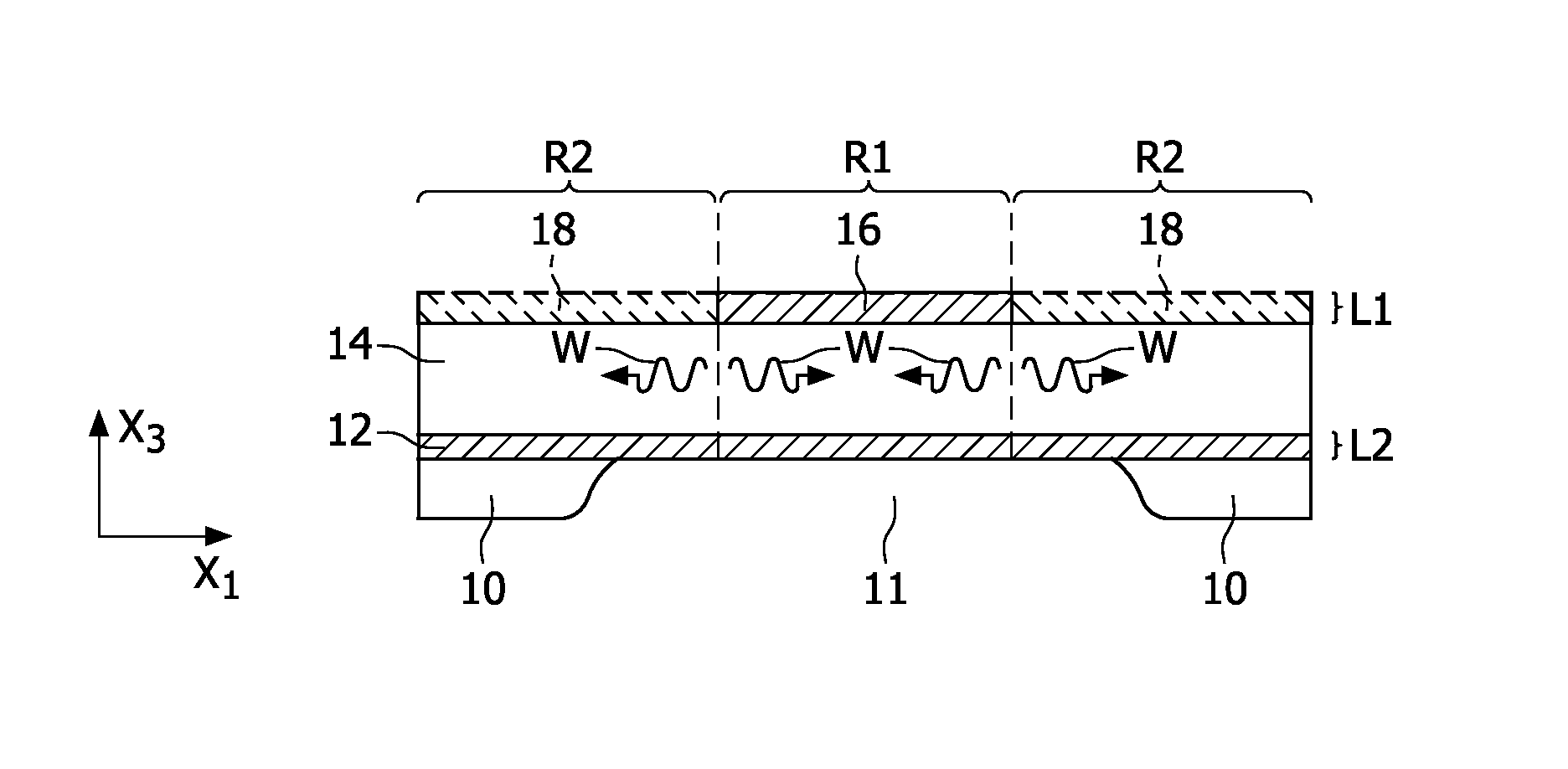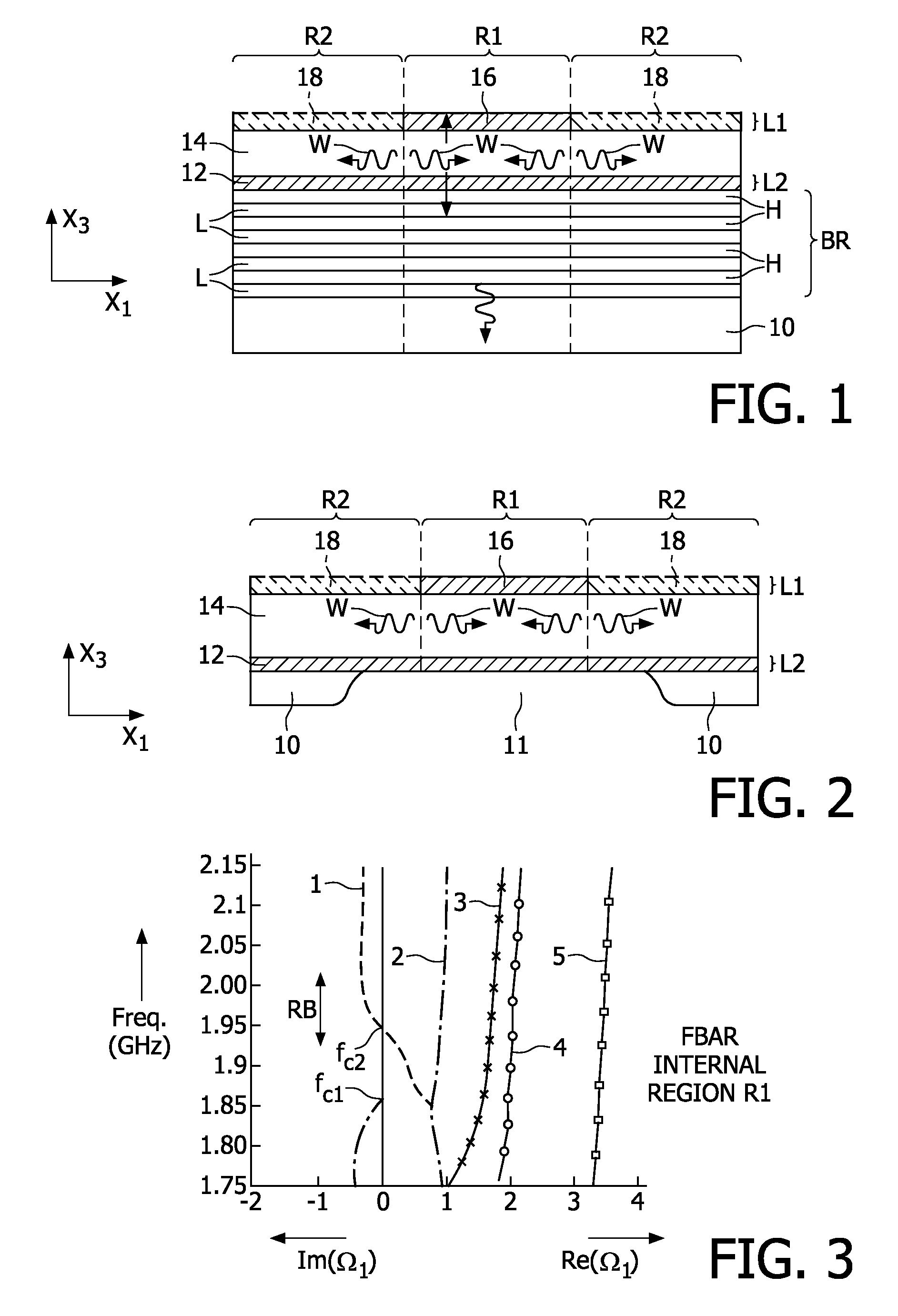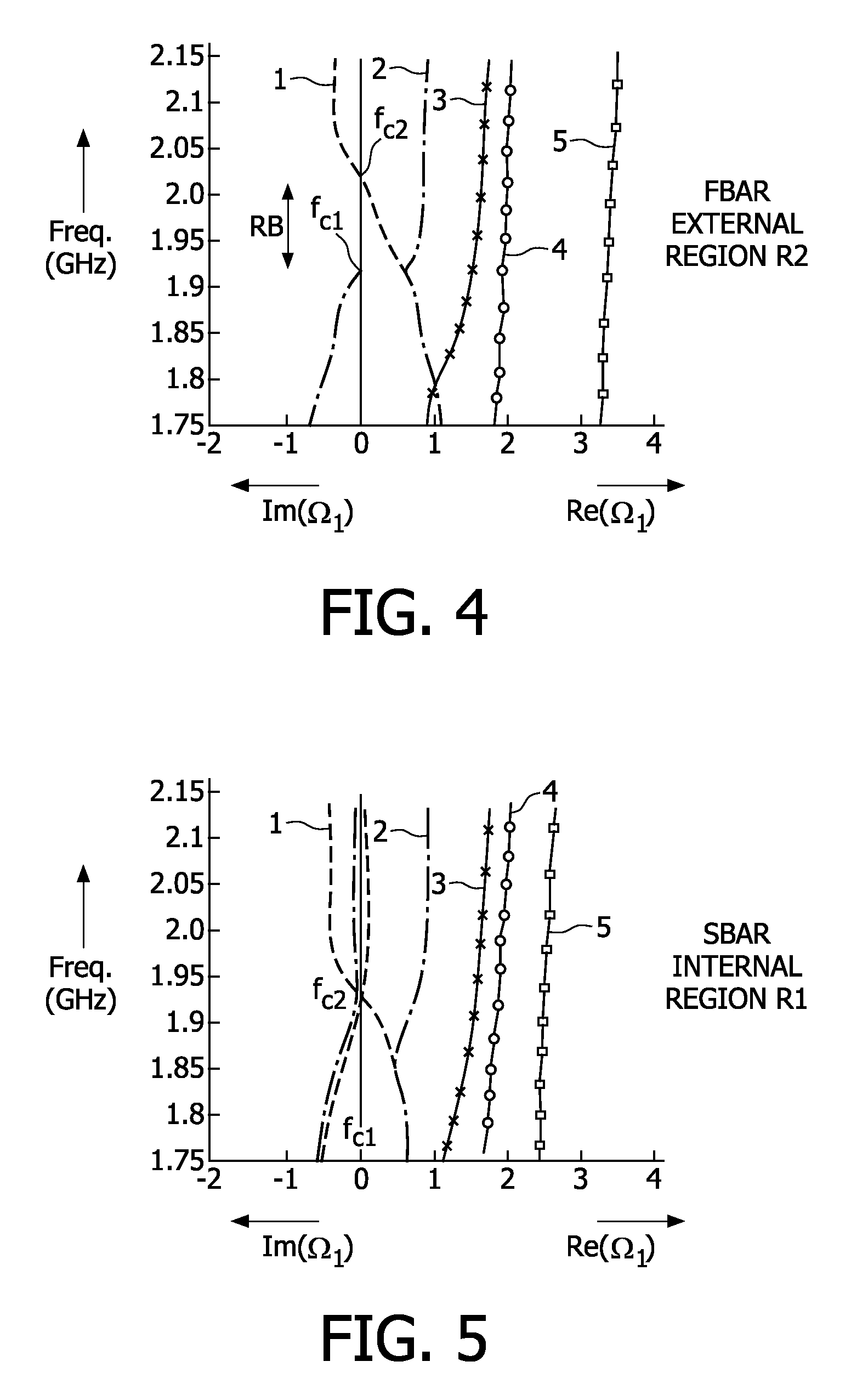Thin-film bulk-acoustic wave (BAW) resonators
a bulk-acoustic wave and thin-film technology, applied in piezoelectric/electrostrictive/magnetostrictive devices, piezoelectric/electrostriction/magnetostriction machines, electrical apparatus, etc., can solve the problems of inadequate explanation, no effective remedy, and construction should reduce loss, so as to reduce the loss of baw resonators and the effect of insertion loss of baw filters
- Summary
- Abstract
- Description
- Claims
- Application Information
AI Technical Summary
Benefits of technology
Problems solved by technology
Method used
Image
Examples
Embodiment Construction
r comprising aluminium having a thickness of 100 nm planarised with a Ta2O5 dielectric layer also of 100 nm thickness; the broken line relates to a 1D model and the continuous line relates to a 2D model,
[0031]FIG. 13 is a cross-section through the layers of a non-planarised FBAR,
[0032]FIG. 14 is a cross-section through the layers of a FBAR in which the position of the layers 12 and 16 have been reversed compared to FIGS. 2 and 13, and
[0033]FIG. 15 is a block schematic diagram of a radio transceiver including at least one BAW resonator made in accordance with the present invention.
[0034]In the drawings the same reference numerals have been used to indicate corresponding features.
MODES FOR CARRYING OUT THE INVENTION
[0035]The description of FIGS. 1 and 2 will initially describe the prior art BAW devices and the effect of the existence of the radiation-band. Afterwards the measures for overcoming the effect of the radiation-band will be described.
[0036]The SBAR shown in FIG. 1 comprises...
PUM
 Login to View More
Login to View More Abstract
Description
Claims
Application Information
 Login to View More
Login to View More - R&D
- Intellectual Property
- Life Sciences
- Materials
- Tech Scout
- Unparalleled Data Quality
- Higher Quality Content
- 60% Fewer Hallucinations
Browse by: Latest US Patents, China's latest patents, Technical Efficacy Thesaurus, Application Domain, Technology Topic, Popular Technical Reports.
© 2025 PatSnap. All rights reserved.Legal|Privacy policy|Modern Slavery Act Transparency Statement|Sitemap|About US| Contact US: help@patsnap.com



